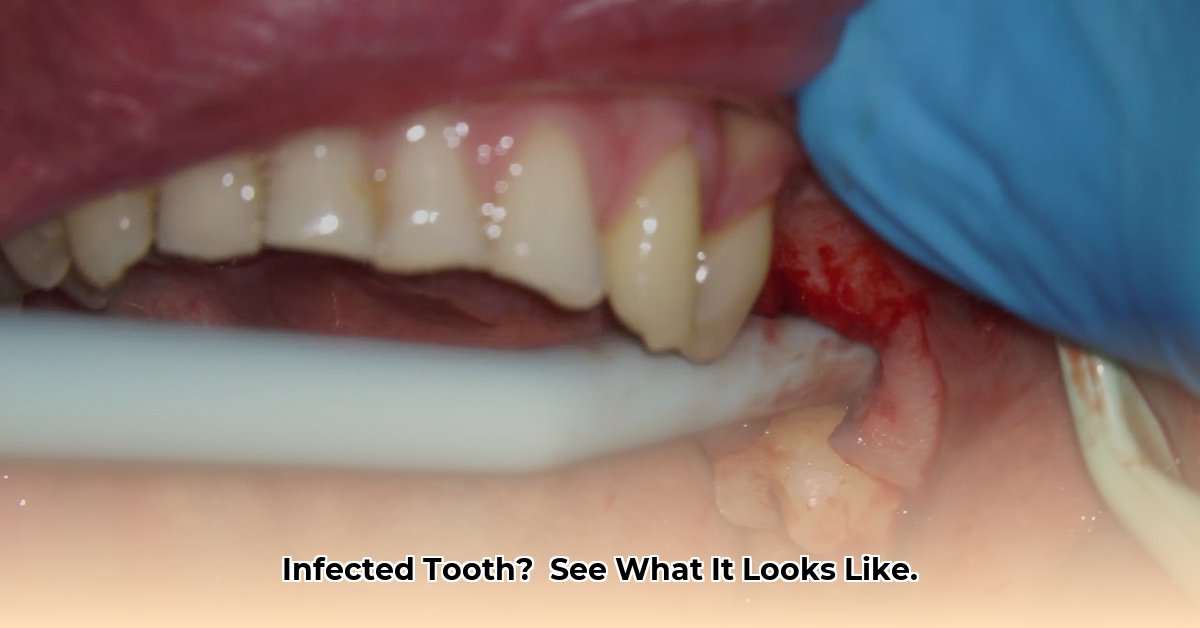This guide helps you visually identify potential infection signs after a tooth extraction. Remember, this information is for guidance only and does not replace a dentist’s evaluation. Always consult your dentist for diagnosis and treatment.
Is My Extraction Site Infected? A Visual Guide
Concerned about your healing after an extraction? It’s natural to feel a little anxious. This visual guide helps you understand what’s normal and what might signal a problem. Remember, consulting your dentist is crucial for accurate diagnosis and treatment.
(Insert high-quality image of a healthy extraction site, annotated to show the blood clot and normal gum appearance. Caption: A healthy extraction site typically forms a dark red or brown blood clot.)
(Insert high-quality images of infected extraction sites at various stages, from mild to severe. Annotate each image clearly, highlighting signs like pus, increasing swelling, and discoloration. Captions should explain what each stage represents, e.g., “Mild infection showing localized swelling and redness,” “Moderate infection with visible pus,” “Severe infection with significant swelling and discoloration.”)
(Image of exposed bone (dry socket). Caption: Exposed bone, appearing grayish-white, can be a sign of dry socket, a painful condition requiring prompt dental care.)
Beyond the Visuals: Other Infection Symptoms
While visual cues are important, other symptoms can suggest infection:
- Worsening Pain: Pain that intensifies after a few days or is not relieved by over-the-counter pain medication.
- Increasing Swelling: Swelling that spreads to the cheek, jaw, or neck.
- Redness and Heat: The area around the extraction site may appear red, inflamed, and feel warm to the touch.
- Pus: A yellowish-white discharge (pus) at the extraction site.
- Bad Taste or Smell: A persistent bad taste or foul odor coming from the extraction site.
- Fever: A fever, especially with chills, may indicate a spreading infection.
- Swollen Lymph Nodes: Tender and swollen lymph nodes under your jaw or in your neck.
Understanding Infection Types
Several issues can arise after an extraction:
- Dry Socket (Alveolar Osteitis): This occurs when the blood clot dislodges or dissolves prematurely, exposing the bone. This can cause significant pain and increase infection risk. Learn more about dry socket.
- Bacterial Infection: Bacteria can invade the extraction site, causing a localized infection.
When to Seek Immediate Care
Contact your dentist immediately if you experience:
- Severe or worsening pain
- Significant swelling
- Pus drainage
- Fever
- Difficulty swallowing or breathing
For difficulty breathing, go to the nearest emergency room. Find a dentist near me.
Post-Extraction Care: Preventing Infection
Proper care minimizes infection risk:
- Follow Instructions: Adhere to your dentist’s post-operative instructions.
- Gentle Rinses: Rinse with saltwater as directed by your dentist.
- Avoid Smoking & Straws: These create suction that can dislodge the blood clot.
- Soft Foods: Stick to soft, easy-to-chew foods.
- Hydration: Drink plenty of fluids.
FAQs
| Question | Answer |
|---|---|
| Is some bleeding normal? | Yes, some bleeding is expected immediately after the extraction. However, excessive or prolonged bleeding should be reported to your dentist. |
| How long does healing take? | Most people experience significant healing within a week or two, but complete bone healing can take several months. Individual healing times vary. |
| Why does my extraction site smell? | A slight odor can be normal in the initial days. A persistent foul odor may suggest an infection. |
This guide provides helpful information, but it does not substitute professional advice. Contact your dentist for any concerns.
While this guide reflects current best practices, research in post-extraction care is ongoing. Some studies suggest that certain medications may influence healing, while other research explores the role of individual factors like genetics in infection susceptibility. It’s important to stay informed and discuss your specific situation with your dentist.
- The Best Bento Box Price For Your Perfect Packed Lunch - December 15, 2025
- Bento Box Shopping Tips for Smart and Stylish Lunch Prep - December 14, 2025
- Bento Box Trays Streamline Restaurant Meal Presentation and Transport - December 13, 2025










